
|
Astronomy Picture Of the Day (APOD)
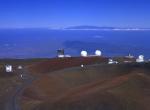 The Subaru Telescope
The Subaru Telescope
1.02.1999
Last week, Japan's new Subaru Telescope made its first observations of the sky. The gray building housing Subaru is visible just left of the white Keck domes near the photo's center. Subaru is the latest in the class of optical telescopes using a mirror with a diameter greater than 8 meters.
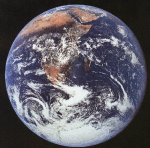 Welcome to Planet Earth
Welcome to Planet Earth
31.01.1999
Welcome to Planet Earth, the third planet from a star named the Sun. The Earth is shaped like a sphere and composed mostly of rock. Over 70 percent of the Earth's surface is water. The planet has a relatively thin atmosphere composed mostly of nitrogen and oxygen.
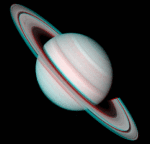 Stereo Saturn
Stereo Saturn
30.01.1999
Get out your red/blue glasses and launch yourself into this stereo picture of Saturn! The picture is actually composed from two images recorded weeks apart by the Voyager 2 spacecraft during its visit to the Saturnian System in August of 1981.
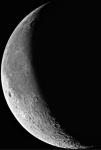 The Moon In January
The Moon In January
29.01.1999
Reckoning dates by Universal Time, the next full moon will be on Sunday, January 31. Since the last was on January 2nd, Sunday's full moon will be the second this month. Perhaps only...
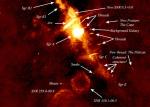 The Galactic Center A Radio Mystery
The Galactic Center A Radio Mystery
28.01.1999
Tuning in to the center of our Milky Way galaxy, radio astronomers explore a complex, mysterious place. A premier high resolution view, this startlingly beautiful picture covers a 4x4 degree region around the galactic center.
 Hypatia of Alexandria
Hypatia of Alexandria
27.01.1999
Sixteen hundred years ago, Hypatia became one of the world's leading scholars in mathematics and astronomy. Hypatia's legendary knowledge, modesty, and public speaking ability flourished during the era of the Great Library of Alexandria.
 M17: The Omega Nebula
M17: The Omega Nebula
26.01.1999
The Omega Nebula contains glowing gas, dark dust, and some unusually massive stars. Also known as the M17 and the Swan Nebula, the Omega Nebula is about 5000 light-years away, 20 light-years across, and visible with binoculars in the constellation of Sagittarius.
 Galaxy And Gamma Ray Burst
Galaxy And Gamma Ray Burst
25.01.1999
Gamma-ray bursts rule the high-energy sky and Saturday another brief, intense flash of gamma-rays from the cosmos triggered space-based detectors. The orbiting Compton Observatory's BATSE instrument quickly relayed the burst's approximate location to fast-slewing, ground-based cameras primed to search for an elusive optical flash.
 A Venus Landing
A Venus Landing
24.01.1999
This image is part of the first color panoramic view from Venus. It was transmitted by a TV camera on the Soviet Venera 13 lander which parachuted to thesurface on March 1, 1982. Venus...
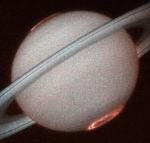 Saturnian Aurora
Saturnian Aurora
23.01.1999
Girdling the second largest planet in the Solar System, Saturn's Rings are one of the most spectacular sights for earthbound telescopes. This image from the orbiting Hubble Space Telescope's STIS instrument, offers a striking view of another kind of ring around Saturn - pole encircling rings of ultraviolet aurora.
|
January February March April May June July August September October November December |
|||||||||||||||||||||||||||||||||||||||||||||||||